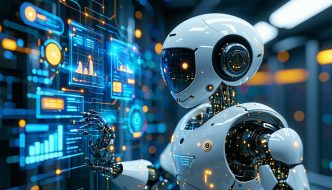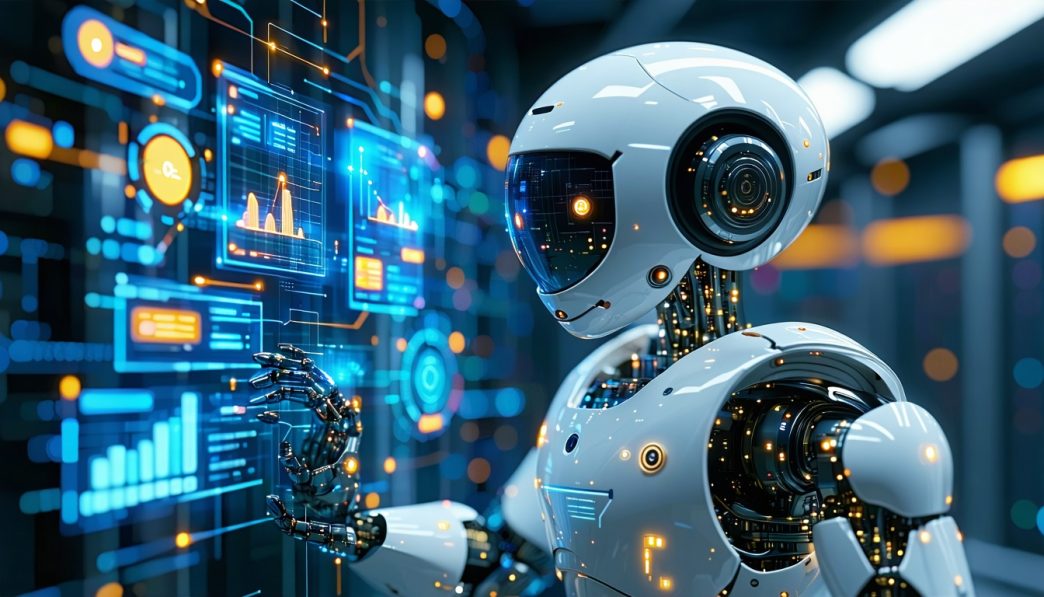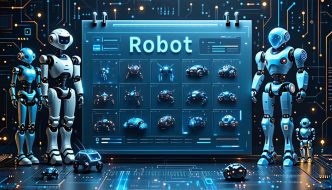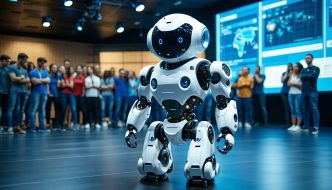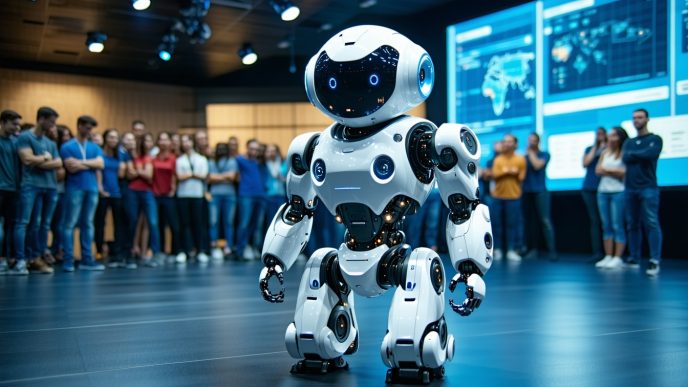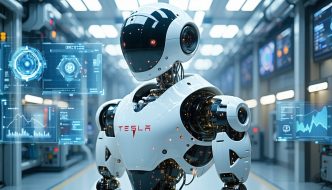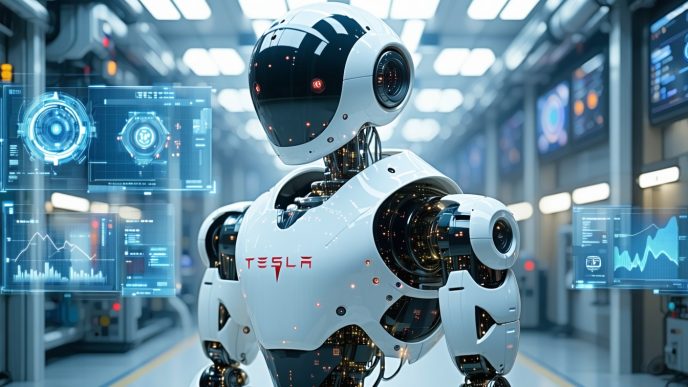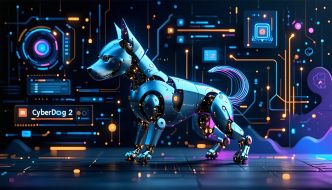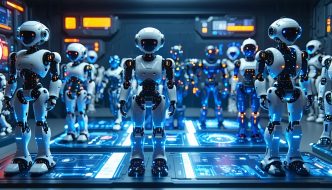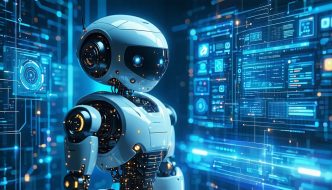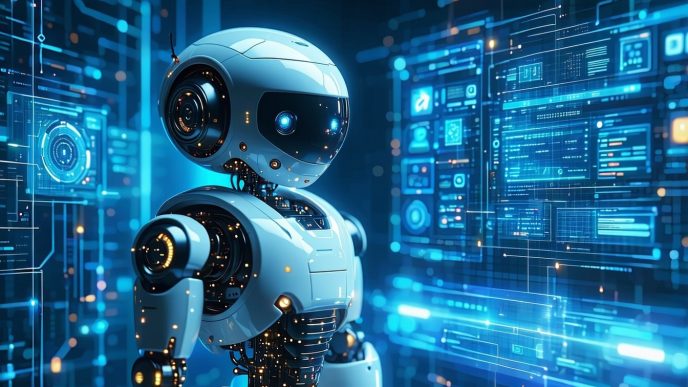Exploring Robot Software Updates
Importance of Software Updates for Robots
Software updates are crucial for maintaining the efficiency and effectiveness of robots. Just as with personal devices, keeping robot software up to date ensures improved performance, enhanced features, and increased security. Regular updates allow manufacturers to fix bugs and vulnerabilities, providing a more reliable and safer robotic experience.
Robots integrated with the latest software can adapt to new challenges and tasks, aligning their operations with current technological advancements. These updates can also introduce new functionalities that enhance user experience, making robots more versatile and valuable.
| Benefit of Software Updates | Description |
|---|---|
| Improved Performance | Enhancements that increase the speed and accuracy of robots. |
| New Features | Introduction of capabilities that extend the functionality of existing models. |
| Security Enhancements | Fixes that protect against vulnerabilities and potential cyber threats. |
| Compatibility | Ensures integration with new technologies and platforms. |
Impact of Software Updates on Robot Functionality
The functionality of robots greatly depends on the software that powers them. Updates can significantly alter capabilities, allowing robots to perform tasks more efficiently and effectively. For instance, robots may experience enhancements in their navigational systems, enabling better pathfinding and obstacle avoidance.
These updates can also optimize task performance, allowing robots to execute complex tasks with greater accuracy and speed. In an increasingly competitive landscape, robots that can quickly adapt to software changes remain ahead, especially in sectors such as logistics, manufacturing, and personal assistance.
| Functional Impact | Description |
|---|---|
| Task Optimization | Software updates can streamline procedures and improve task execution time. |
| Enhanced Navigation | Improved algorithms allow for better routing and decision-making. |
| Increased Autonomy | Updates may enable robots to operate independently with minimal human intervention. |
Staying informed about the latest robot new releases and their respective software upgrades is essential for enthusiasts and consumers keen on leveraging innovations in robotics. The advancements made through robot software updates can dictate purchasing decisions and usability.
Current Robot Software Upgrades
The landscape of robotic technology is evolving rapidly, so it’s crucial for tech enthusiasts to stay informed about the latest software updates. This section outlines the current trends within the robotics industry and identifies the major players involved in software development.
Robotics Industry Trends
The robotics industry is witnessing significant advancements in various areas, reflecting a growing demand for enhanced efficiency and functionality. One notable trend is the integration of artificial intelligence (AI) into robot software updates. AI capabilities allow robots to learn from their environments, adapt to different tasks, and improve overall performance.
Another trend is the focus on improving user experience through intuitive interfaces and better interaction protocols. As robots become more prevalent in consumer households and workplaces, creating a user-friendly experience is a priority.
| Trend | Description |
|---|---|
| AI Integration | Enhanced decision-making and adaptability |
| Improved User Experience | Intuitive interfaces and better interaction with users |
| Robust Security Measures | Enhanced data protection and cybersecurity protocols |
| Workflow Automation | Streamlining processes for increased efficiency |
With these advancements, organizations are ensuring their robots can not only complete tasks but do so safely and effectively.
Major Players in Robot Software Development
Several key players are leading the charge in robot software development, constantly pushing boundaries and driving innovation. These companies are focused on releasing software upgrades that improve robot functionality and performance.
| Company | Focus Area |
|---|---|
| OpenAI | AI integration and machine learning capabilities |
| Boston Dynamics | Advanced robotics and mobility |
| ABB Robotics | Automation and industrial robotics |
| NVIDIA | AI hardware and software frameworks |
| SoftBank Robotics | Humanoid robot software and interactions |
These companies are creating a competitive landscape, where advancements in software are critical to maintaining a leading edge. For more information on notable robotic product launches, refer to our article on robot new releases.
Understanding these trends and the major players in the software development arena can aid tech-savvy consumers and robotics enthusiasts in identifying which robot software updates are worth monitoring. This knowledge empowers individuals to compare models and innovations more effectively, ensuring they remain at the forefront of robotics technology.
AI Integration
The integration of artificial intelligence (AI) into robot software is transforming how robots operate and interact with their environment. This section will cover advancements in AI and its application within robot software updates, highlighting the significant role AI plays in enhancing robotic capabilities.
Advancements in Artificial Intelligence
Recent developments in AI have led to more sophisticated robot software, enabling machines to learn from their surroundings and improve their functionality. Key advancements include:
| Advancement | Description |
|---|---|
| Machine Learning | Robots can analyze vast amounts of data to recognize patterns and improve their performance over time. |
| Natural Language Processing | Some robots can now understand and respond to verbal commands, making them more interactive. |
| Computer Vision | Robots equipped with advanced imaging systems can perceive their environment better, identifying objects and navigating complex spaces. |
These advancements contribute to a more adaptive and efficient robotic performance, paving the way for smarter machines that can handle dynamic tasks with ease. For those interested in how these changes affect robot functionality, exploring robot software updates can provide deeper insights.
Application of AI in Robot Software
The application of AI within robot software is multi-faceted and enhances various aspects of robotic operation. Some notable applications include:
| Application | Description |
|---|---|
| Autonomous Navigation | AI algorithms help robots plan and execute optimal paths in real-time, improving navigation efficiencies. |
| Task Automation | Robots can now perform complex tasks independently, learning from trial and error to refine their processes. |
| Predictive Maintenance | Using AI, robots can monitor their own condition, predicting when maintenance is required and reducing downtime. |
The impact of AI integration is significant, leading to more capable robots that can adapt to a wide range of environments. For more information on recent developments, check the latest updates on the tesla optimus release update and the xiaomi cyberdog 2 release.
As AI continues to evolve, its role in robotic software development will only deepen, enabling future innovations in the field. To stay updated on upcoming models and technologies, consider visiting the robot release calendar and articles that outline new humanoid robots to watch.
Enhanced Navigation Systems
Robots are increasingly becoming integral to various sectors, and navigation systems are at the forefront of these advancements. Software updates play a crucial role in enhancing how robots navigate, enabling them to perform tasks more effectively and with greater precision.
Improvements in Robot Navigation
Recent software upgrades have introduced several key improvements in robot navigation technology. Enhanced algorithms, improved sensors, and better integration of artificial intelligence have contributed to more accurate and efficient movement.
| Improvement | Description |
|---|---|
| Advanced Mapping | Robots can now create and update maps in real-time using LiDAR and camera data. This allows for better spatial awareness and navigation in dynamic environments. |
| Obstacle Detection | Upgraded sensors provide enhanced detection of obstacles, allowing robots to maneuver safely around complex environments. |
| Path Optimization | Software updates enable robots to calculate the most efficient paths, significantly reducing transit times and energy consumption. |
| Real-time Adaptation | Enhanced AI integration permits robots to respond to changing surroundings instantly, allowing them to make navigation adjustments on the fly. |
These improvements not only enhance the autonomy of robots but also expand their application range in industries such as warehousing, delivery, and healthcare.
Benefits of Enhanced Navigation Systems
The benefits of these enhanced navigation capabilities are significant, providing advantages across different domains where robots operate.
| Benefit | Description |
|---|---|
| Increased Efficiency | Enhanced navigation systems lead to quicker task completion, allowing robots to manage more responsibilities in less time. |
| Improved Safety | With better obstacle detection and avoidance capabilities, robots can operate safely alongside humans, reducing the risk of accidents. |
| Greater Flexibility | Robots equipped with advanced navigation systems can adapt to varied tasks and environments, making them more versatile in application. |
| Enhanced User Experience | Improved navigation capabilities result in smoother interactions, increasing overall satisfaction for users and operators. |
As robots continue to integrate more sophisticated navigation technologies, the impact on productivity and safety is expected to grow. Keeping an eye on robot new releases will provide readers with insight into the latest advancements in robotic navigation and other related improvements.
Improved Task Performance
Advancements in robot software updates play a significant role in enhancing task performance. By optimizing robot task efficiency and implementing performance upgrades, manufacturers can ensure that robots are more capable and reliable in their operations.
Optimizing Robot Task Efficiency
One of the primary objectives of recent robot software updates is to improve task efficiency. This involves streamlining processes, reducing energy consumption, and enhancing the overall output of robotic systems. New algorithms and machine learning techniques allow robots to analyze their working environment more effectively, enabling them to make smarter decisions as they perform tasks.
| Efficiency Metrics | Pre-Update Performance | Post-Update Performance |
|---|---|---|
| Task Completion Time (minutes) | 15 | 10 |
| Energy Consumption (kWh) | 1.5 | 1.0 |
| Error Rate (%) | 5 | 2 |
In this table, the improvements highlight how software upgrades contribute to how robots perform tasks more efficiently, benefiting both productivity and operational costs.
Performance Enhancements through Software Updates
Robot manufacturers are increasingly focusing on delivering performance enhancements through software updates. These updates are designed to address specific limitations and enhance the capabilities of robotic systems. Key areas of improvement include:
- Precision: Upgraded software improves accuracy in task execution, ensuring that robots perform their functions with greater precision.
- Speed: Enhancements often include increased processing power, resulting in faster task execution without compromising quality.
- Adaptability: Updated software allows robots to adapt to new environments and tasks, making them more versatile in real-world applications.
| Performance Features | Upgrade Before | Upgrade After |
|---|---|---|
| Task Completion Speed (tasks/hour) | 4 | 6 |
| Operational Adaptability (scenarios handled) | 3 | 5 |
| Accuracy Rate (%) | 90 | 98 |
These performance features indicate the substantial improvements enabled by the latest software upgrades. Tech-savvy consumers and enthusiasts can explore the developments further in our articles on robot new releases and ai robot firmware updates.
By integrating these enhancements, manufacturers are not only improving robot task performance but also setting the stage for future innovations in robotics. As new models emerge, potential buyers can stay informed by checking our robot release calendar.
Security and Data Protection
As technology continues to advance, ensuring the security of robots and their software becomes increasingly critical. With the rise in robot adoption in homes and industries, the potential for cyber threats has escalated. Understanding the significance of robust security protocols in robot software updates is essential for users and developers alike.
Importance of Robot Security
Robot security is vital for protecting sensitive data, preventing unauthorized access, and ensuring the safe operation of robotic systems. As robots become more autonomous and integrated into various applications, vulnerabilities in their software could lead to serious consequences, including data breaches and operational failures.
According to recent studies, a significant percentage of organizations have reported concerns over robot security threats. The following table summarizes findings related to security risks faced by robotic systems:
| Concern | Percentage (%) |
|---|---|
| Data breaches | 45% |
| Unauthorized access | 37% |
| Operational failures | 29% |
| Malware attacks | 23% |
Robotic developers must prioritize implementing strong encryption and authentication methods within software updates to safeguard these systems against potential threats.
Data Protection Measures in Robot Software Updates
To enhance robot security, developers employ various data protection measures during software updates. These measures ensure that both user data and operational data remain secure throughout the update process. Key strategies include:
-
Encryption: Data is encrypted both during storage and transmission, making it virtually impossible for unauthorized individuals to access sensitive information.
-
Regular Security Patches: Frequent software updates are critical in addressing newly identified vulnerabilities. These patches not only fix bugs but also enhance overall system security.
-
Access Controls: Developing strict access controls helps limit who can modify or access the robot’s software and data. Role-based access ensures that only authorized personnel can make significant changes.
-
User Education: Keeping users informed about security best practices plays a crucial role in maintaining security. Training users on recognizing phishing attempts and secure password management can drastically reduce security risks.
The ongoing enhancements in robot software updates reflect a commitment by developers to prioritize user safety and data protection. For further insights on robot innovations, check out our articles on robot new releases and ai robot firmware updates.
User Experience Enhancements
User experience plays a crucial role in the effectiveness and appeal of robots in various sectors. Recent robot software updates have focused on creating more user-friendly interfaces and improving user interaction with robotic systems.
User-Friendly Interfaces
The design of user interfaces (UIs) directly affects how effectively users can interact with robots. Modern updates emphasize simplicity and intuitiveness, making it easier for individuals with varying levels of technical expertise to operate robotic systems.
Recent trends indicate a shift toward touch-screen interfaces, voice commands, and mobile app integrations, providing users multiple options for interaction. Below is a breakdown of various UI developments found in recent robot software updates:
| Interface Type | Key Features | User Benefits |
|---|---|---|
| Touch-Screen | Responsive design, customizable layouts | Intuitive navigation, quick access |
| Voice Commands | Natural language processing | Hands-free operation |
| Mobile App Integration | Remote control via smartphone | Convenience and portability |
| Visual Dashboards | Real-time feedback and status display | Enhanced monitoring and control |
These advancements lead to a more engaging and efficient user experience.
Enhancing User Interaction with Robots
To ensure a seamless interaction between robots and users, software updates have included improvements in robot responsiveness and communication. Robots now employ advanced algorithms to interpret user commands more accurately and provide immediate feedback.
New features that enhance user interaction include:
- Personalization: Robots can adapt to an individual’s preferences over time, offering tailored experiences.
- Feedback Mechanisms: Robots are equipped with sensors and displays that provide immediate responses to user inputs, fostering a more interactive environment.
- Multi-user Capabilities: Software updates allow robots to recognize and adapt to multiple users, creating a shared experience for family members or coworkers.
Curated experiences help ensure that users feel more connected and in control of their robotic companions, ultimately enhancing user satisfaction. For those interested in the latest updates, details on robot new releases and specific models, such as the Tesla Optimus release update and Xiaomi Cyberdog 2 release, provide a look into the future of robotics.
Future Prospects
The world of robotics is rapidly evolving, with significant advancements anticipated in the coming years. As technology continues to develop, several predictions regarding robot software updates and emerging technologies are gaining traction.
Predictions for Future Robot Software Upgrades
A key focus for future updates will be enhancing automation capabilities. Robots are expected to become more autonomous, allowing them to perform complex tasks with minimal human intervention. Predictive analytics and machine learning algorithms will enable robots to learn from their environment and improve their performance over time.
Another prediction involves the integration of advanced AI systems to facilitate more natural interactions. This includes refining the robot’s ability to understand voice commands, interpret gestures, and engage in more sophisticated conversations. As robots become more user-friendly, consumers and industries alike will benefit from their increasing capabilities.
| Prediction | Description |
|---|---|
| Increased Automation | Robots performing complex tasks with minimal human input. |
| Enhanced AI Integration | More natural interactions through improved AI systems. |
| Learning Algorithms | Robots optimizing skills by learning from experiences. |
Emerging Technologies in Robot Software Development
Several new technologies are set to revolutionize robot software development. One such technology is the implementation of edge computing. This allows robots to process data locally rather than relying solely on cloud-based systems, resulting in faster decision-making and improved efficiency.
Additionally, advancements in sensor technology will lead to better environmental awareness. Enhanced sensors will enable robots to perceive their surroundings more accurately, improving navigation and task execution. Moreover, the rise of 5G technology will facilitate faster communication between robots and other connected devices, further enhancing their functionalities.
| Technology | Impact |
|---|---|
| Edge Computing | Faster data processing for improved efficiency. |
| Advanced Sensors | Better environmental perception for enhanced navigation. |
| 5G Technology | Enhanced communication between robots and devices. |
These predictions and emerging technologies indicate a dynamic future for robot software updates. Keeping track of these trends will help tech-savvy consumers, robotics enthusiasts, and early adopters stay informed about the latest innovations. For more information on upcoming releases, check out the robot release calendar.

